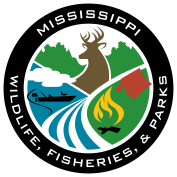
Written by: Chandler Strickland
Edits by: Pierce Young
Forming a land cooperative, or co-op, is a great way for neighbors to join together to reach multiple wildlife management objectives. MDWFP’s Private Lands Program commonly helps form wildlife management cooperatives by joining neighboring properties with like minded goals to manage on a larger scale.
Examples of how landowners/leaseholders benefit from land cooperatives include:
- Seed, fertilizer, and lime can be purchased in bulk at discounted rates.
- Managing wildlife populations that have large home ranges, like deer and turkeys, on a larger more effective scale.
- Sharing buck pictures and coming to agreements on whether those bucks need to be harvested or not in order to reach the buck management goal.
- Creating a local feeding ban amongst neighbors can help decrease competition between properties, while focusing those costs on more beneficial management practices, and decreasing the negative impacts of concentrated feeders.
- Forming large wild hog management areas, cost-sharing large hog “smart traps”, and moving them around across property lines to have a greater impact on control efforts.
- Cost-sharing other specialized equipment, such as a seed drill, lime spreader, or walk-in cooler.
- Joining acres together to attract a timber buyer, if property sizes are too small alone.
- Helping with large habitat management projects, such as a prescribed burning.
- Heightened security from trespassers and poachers.
- Sharing knowledge of wildlife management techniques and working with the same wildlife biologist.
Find community within a land co-op. We can do more together. For more information on wildlife management visit